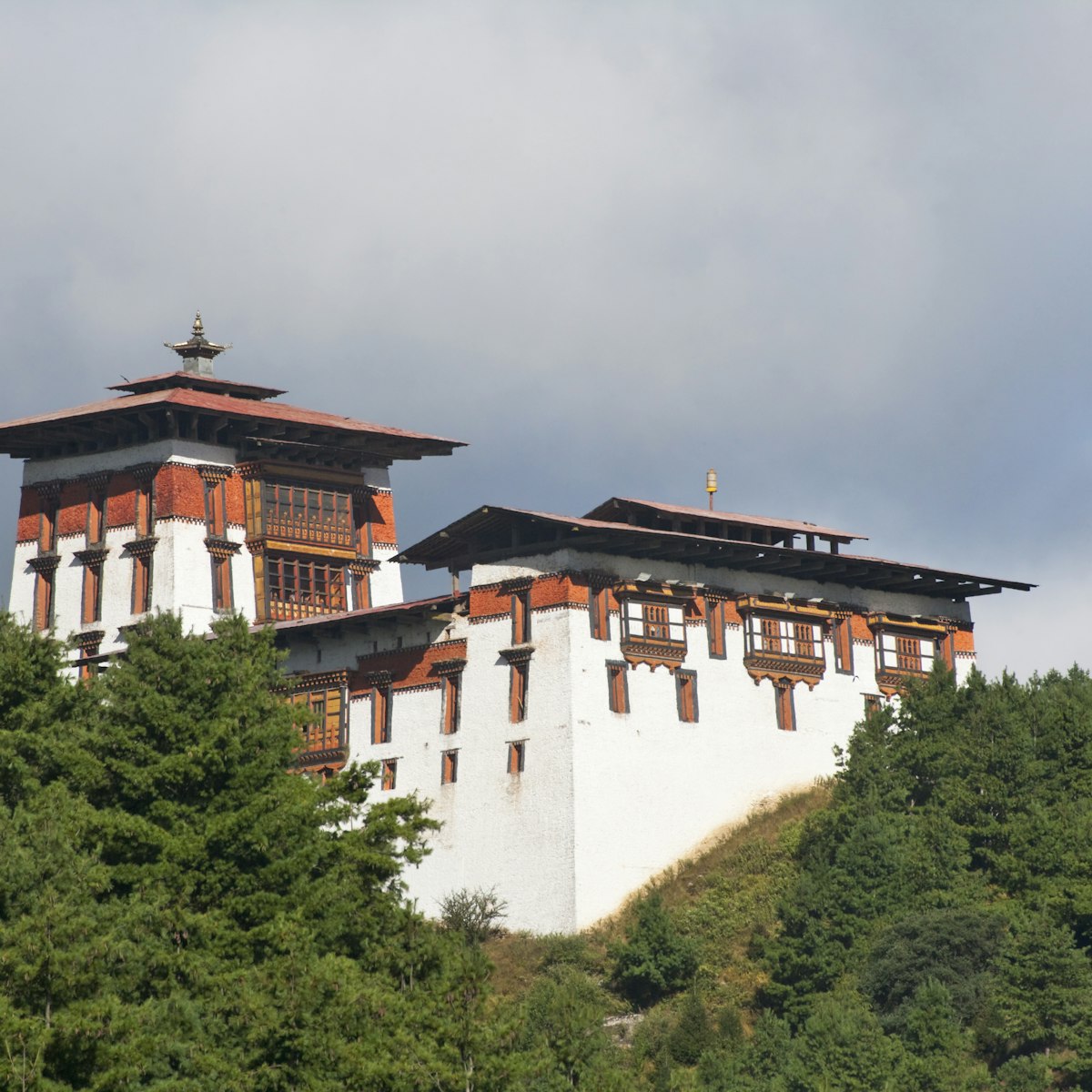This large, active and important temple complex is named after the body (kur) print (jey) of Guru Rinpoche, which is preserved in a cave inside the oldest of the three buildings that make up the complex. It is at the end of a paved road, 2.5km from Chakhar Lhakhang.
The first of the three temples, the Guru Lhakhang, is the oldest and was built in 1652 by Mingyur Tenpa when he was penlop of Trongsa. Tucked just below the eaves is a figure of a snow lion with a jachung (also called garuda) above it, which represents the famous struggle between Guru Rinpoche (appearing as the garuda) and the local demon, Shelging Kharpo (as the snow lion). The statue of Shelging Kharpo inside is usually hidden from view.
At the entrance to the lower-floor Sangay Lhakhang is a small crawl-through rock passage; Bhutanese believe that in crawling through a narrow tunnel like this you will leave your sins behind. Behind the statues of the three Buddhas is a secret passageway that is said to have once led to Tharpaling.
The upper-floor sanctuary is the holiest in the complex. There are 1000 small statues of Guru Rinpoche neatly lined up along the left wall, plus statues of Guru Rinpoche, Pema Lingpa and Drolma (Tara). The main statue in this sanctuary is again of Guru Rinpoche, flanked by his eight manifestations and eight chortens. Hidden behind this image is the meditation cave, where he left his body imprint. The far wall has images of Guru Rinpoche, his manifestations, his 25 disciples and various other figures connected with the Guru. The big cypress tree behind the lhakhang is said to have sprouted from the Guru's walking stick.
Ugyen Wangchuck, the first king of Bhutan, built the second temple, the Sampa Lhundrup Lhakhang, in 1900, when he was still penlop of Trongsa. On the entrance porch are paintings of the Guardians of the Four Directions and of various local deities who were converted to Buddhism by Guru Rinpoche. The white ghostlike figure on the white horse above the doorway to the right is Shelging Kharpo; also here are local protectors Yakdu Nagpo (on a black yak) and Kyebu Lungten (on a red horse). Inside the temple is a towering statue of Guru Rinpoche, this one 10m high, flanked again by his eight manifestations. A smaller image of the Guru sits facing towards Tibet with a defiant stare.
The third building in the complex was built by Ashi Kesang Wangchuck, queen to the third king, in 1984 under the guidance of Dilgo Khyentse Rinpoche. She also had the courtyard in front of the three temples paved with stones and built a wall with 108 chortens around the whole complex. On the porch in front of the temple is a large wheel of life. At the bottom you can see a man being judged, with black and white stones representing his good and bad deeds. There's a mystic spiral mandala on the side of the entrance. Interior murals illustrate various monastic rules and regulations, including the strict dress codes.
The elaborately decorated Zangto Pelri Lhakhang, a short distance south of the Kurjey Lhakhang compound, features a kitschy 3D depiction of the paradise of Guru Rinpoche and a wall mural of Ashi Wangchuk enjoying life in the western paradise known as Dewachen. The ground floor has a particularly lovely portable chorten shrine known as a tashi gomang.
A five-minute walk up the hillside near the entrance is the Kurjey Drupchhu, a sacred spring where monks come to wash their socks.
The popular Kurjey tsechu is held in June and includes a masked dance that dramatises Guru Rinpoche's defeat of Shelging Kharpo. A large thangka, called Guru Tshengye Thondrol, depicting the eight manifestations of Guru Rinpoche, is unfurled in the early morning before the dances, which are performed by the monks from Trongsa.





